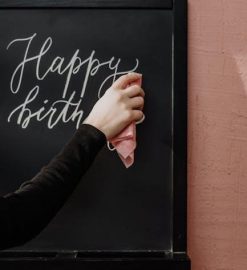singer e99670 manual

Singer 50T8 E99670 Sewing Machine Manual
This comprehensive manual provides detailed instructions and guidance for using the Singer 50T8 E99670 sewing machine. It covers everything from unpacking and setup to basic sewing techniques‚ troubleshooting common issues‚ and proper maintenance and care. The manual is available in multiple languages including English‚ French‚ and Spanish. This manual is an essential resource for both beginners and experienced sewers looking to get the most out of their Singer 50T8 E99670 machine.
Introduction
Welcome to the world of sewing with the Singer 50T8 E99670 sewing machine! This manual is your comprehensive guide to understanding and using this versatile machine. It covers a wide range of topics‚ from basic setup and threading to advanced techniques and troubleshooting tips. Whether you are a seasoned sewer or a curious beginner‚ this manual will equip you with the knowledge and confidence to create beautiful and lasting projects.
The Singer 50T8 E99670 is designed to provide you with a smooth and enjoyable sewing experience. It features a range of stitches‚ adjustable stitch length and width‚ and a user-friendly interface. With this manual as your companion‚ you will discover the full potential of your Singer 50T8 E99670 and embark on a rewarding journey of creativity and craftsmanship.
Key Features and Specifications
The Singer 50T8 E99670 sewing machine is packed with features designed to enhance your sewing experience. It boasts a variety of stitch options‚ including straight stitches‚ zigzag stitches‚ and decorative stitches‚ allowing you to tackle a wide range of projects. The machine also features adjustable stitch length and width‚ giving you precise control over your stitches. The Singer 50T8 E99670 is equipped with a powerful motor that provides smooth and consistent sewing performance. Its easy-to-use controls make it suitable for both beginners and experienced sewers.
Here are some of the key specifications of the Singer 50T8 E99670⁚
- Number of stitches⁚ [Insert Number]
- Stitch length⁚ [Insert Range]
- Stitch width⁚ [Insert Range]
- Bobbin type⁚ [Insert Type]
- Needle size⁚ [Insert Size]
These features‚ combined with its user-friendly design‚ make the Singer 50T8 E99670 a versatile and reliable sewing machine for all your crafting needs.
Safety Precautions
Before using your Singer 50T8 E99670 sewing machine‚ it is crucial to familiarize yourself with the following safety precautions to ensure a safe and enjoyable sewing experience. Always keep your fingers away from the needle and presser foot while the machine is in operation. Never leave the machine unattended while it is plugged in. Ensure the machine is properly grounded to prevent electrical shocks. Always unplug the machine before cleaning or performing any maintenance. Use only genuine Singer needles and accessories‚ as using incompatible parts could damage the machine and compromise safety.
It’s important to handle the machine with care and avoid dropping or mishandling it. Keep the machine away from heat sources and moisture to prevent damage. Always supervise children when they are near the machine. If you encounter any issues or have any doubts about the machine’s operation‚ consult the manual or contact Singer customer support.
Getting Started
Getting started with your Singer 50T8 E99670 sewing machine is easy and exciting! Before you begin sewing‚ you need to unpack the machine and set it up. Make sure you have all the necessary components‚ including the foot pedal‚ power cord‚ and accessories. Find a stable and well-lit workspace to set up your machine. Once it’s in place‚ you can start threading the machine. This involves threading the upper thread through the various guides and tension discs. After that‚ you need to wind the bobbin‚ which holds the lower thread. This process involves placing the bobbin on the bobbin winder and feeding the thread through the guides.
Once the bobbin is wound‚ you can insert it into the bobbin case and place it in the machine. You’re now ready to start sewing! Refer to the manual for specific instructions on threading and bobbin winding for your Singer 50T8 E99670 model. You’ll also find helpful diagrams and illustrations to guide you through the process.
Unpacking and Setup
Getting started with your Singer 50T8 E99670 sewing machine is as simple as unpacking and setting it up. Carefully open the box and remove all the components‚ including the machine itself‚ the foot pedal‚ the power cord‚ and any accessories. Place the machine on a sturdy‚ level surface‚ ensuring it is stable and won’t move during use. Connect the power cord to the machine and an electrical outlet. Before you begin sewing‚ make sure your workspace is well-lit and that you have all the necessary tools and materials close at hand. Find a comfortable and ergonomic position for yourself to avoid any strain while sewing. With everything in place‚ you’re ready to begin threading and winding the bobbin!
Threading the Machine
Threading your Singer 50T8 E99670 sewing machine is a straightforward process. Begin by raising the presser foot and winding the hand wheel to position the needle in its highest position. Thread the needle from front to back‚ ensuring the thread passes through the needle’s eye smoothly. Then‚ guide the thread through the thread guide and tension discs‚ following the numbered indicators on the machine. Next‚ pull the thread through the take-up lever‚ which is located on the top right side of the machine. Finally‚ thread the needle‚ making sure the thread is pulled from the front to the back. To complete the threading‚ pull the thread to the back of the machine and leave a tail for easier needle threading. With the upper thread in place‚ you are ready to move on to winding the bobbin.
Winding the Bobbin
Winding the bobbin is a crucial step in preparing your Singer 50T8 E99670 for sewing. Begin by placing the bobbin on the bobbin winder spindle‚ ensuring it is securely positioned. Then‚ thread the bobbin through the bobbin winder guides‚ following the arrows marked on the machine. Next‚ hold the thread end and press down on the bobbin winder lever to start the winding process. The bobbin will rotate‚ filling with thread until it is full. Once the bobbin is fully wound‚ release the bobbin winder lever and cut the thread. Carefully remove the bobbin from the spindle and set it aside. Now‚ you need to insert the bobbin into the bobbin case. Open the bobbin case cover‚ place the bobbin inside‚ and gently pull the thread through the slot on the bobbin case. Close the bobbin case cover‚ ensuring it clicks shut securely. With the bobbin case ready‚ you are prepared to move on to the next step of using your Singer 50T8 E99670 sewing machine.
Basic Sewing Techniques
Mastering basic sewing techniques with your Singer 50T8 E99670 is essential for creating beautiful and functional projects. Start by practicing sewing straight stitches‚ a fundamental technique for creating seams and edges. Guide the fabric under the presser foot‚ keeping it aligned with the needle plate markings for straight lines. Next‚ explore the versatility of zigzag stitches‚ ideal for finishing edges‚ creating decorative accents‚ and securing stretchy fabrics. Adjust the stitch width and length to achieve the desired look and functionality. Practice sewing various fabrics‚ like cotton‚ silk‚ and linen‚ to understand how stitch settings affect the final result. As you gain confidence‚ experiment with different stitch patterns and techniques‚ expanding your sewing repertoire. Remember‚ patience and practice are key to mastering basic sewing techniques and unlocking the full potential of your Singer 50T8 E99670 sewing machine.
Sewing Straight Stitches
Sewing straight stitches is a fundamental technique for creating seams‚ edges‚ and even decorative lines. To achieve a straight stitch‚ ensure the needle plate markings are aligned with the fabric edge. Guide the fabric under the presser foot‚ keeping it smooth and even. Adjust the stitch length to suit the fabric type and desired look. For thicker fabrics‚ a longer stitch length may be preferable‚ while delicate fabrics may require a shorter length. Maintain a consistent speed while sewing‚ avoiding sudden stops or starts; Practice sewing straight lines on scraps of fabric before tackling your project. Remember‚ patience and attention to detail are key to achieving perfect straight stitches‚ adding a professional touch to your sewing projects.
Sewing Zigzag Stitches
The zigzag stitch is a versatile stitch that adds strength and flexibility to seams‚ prevents fraying‚ and creates decorative effects. To sew a zigzag stitch‚ select the zigzag stitch setting on your machine and adjust the width and length to suit your needs. For a wider zigzag‚ increase the width setting‚ and for a more dense stitch‚ decrease the length setting. Start sewing by placing the needle in the down position and then guide the fabric under the presser foot‚ keeping it smooth and even. The zigzag stitch automatically creates a series of alternating stitches‚ creating a zig-zag pattern. This stitch is ideal for securing edges‚ creating decorative borders‚ and even mending tears in fabrics. Practice sewing zigzag stitches on scraps of fabric to familiarize yourself with the technique before applying it to your sewing projects.
Adjusting Stitch Length and Width
The Singer 50T8 E99670 sewing machine allows you to adjust the stitch length and width to suit your specific sewing needs. The stitch length determines the distance between each stitch‚ while the stitch width influences the size of the zigzag stitch. To adjust the stitch length‚ use the stitch length dial‚ typically located on the front of the machine. Rotate the dial to the desired number‚ which corresponds to the length of each stitch. To adjust the stitch width‚ locate the stitch width dial‚ usually found near the stitch length dial. Turning the dial adjusts the width of the zigzag stitch‚ creating different patterns and effects. Adjusting the stitch length and width allows you to create a wide range of stitches for various sewing tasks‚ from delicate embroidery to robust seams. Experiment with different settings to achieve the desired stitch for your projects.
Troubleshooting Common Issues
While the Singer 50T8 E99670 sewing machine is designed for reliable operation‚ you may encounter occasional issues. This section addresses some common problems and provides troubleshooting tips to help you get back to sewing smoothly. If you experience thread jamming‚ check the needle for damage‚ ensure proper threading‚ and clean the bobbin case and raceway. Uneven stitching can be caused by incorrect needle selection‚ improper thread tension‚ or a dirty feed dog. Review the manual for appropriate needle size and thread tension‚ and clean the feed dog thoroughly. If the machine isn’t sewing at all‚ verify that the power cord is plugged in‚ the power switch is turned on‚ and the foot pedal is functioning correctly. Additionally‚ examine the needle for damage or bending and ensure that the bobbin is wound correctly. By following these troubleshooting tips‚ you can resolve most common issues and get your Singer 50T8 E99670 sewing machine back in working order.

Thread Jamming
Thread jamming is a common issue that can occur with any sewing machine‚ and the Singer 50T8 E99670 is no exception. To troubleshoot thread jamming‚ first‚ examine the needle for any damage‚ such as bending or a burr. A damaged needle can cause the thread to snag and break. Next‚ carefully check the threading path‚ ensuring that the thread is correctly routed through each guide and tensioner. A misplaced thread can lead to jams. Furthermore‚ inspect the bobbin case and raceway for any debris or buildup. Clean these components thoroughly to ensure smooth thread movement. If the thread is still jamming‚ verify that the bobbin is wound correctly and that the tension is set appropriately. By addressing these potential causes‚ you can usually resolve thread jamming and get your Singer 50T8 E99670 sewing machine back to working smoothly.



Leave a Reply
You must be logged in to post a comment.